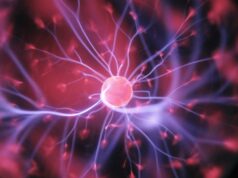
The president of the United States of America has recently declared the opioid crisis in that country a “public health emergency”. In light of that declaration, the neuromodulation community is once again seeking to shine a spotlight on the validity of neurostimulation therapy as a non-opioid option for the treatment of chronic pain. Here, Timothy R Deer, president of the International Neuromodulation Society, makes the case for neurostimulation.
Recently, I saw a young woman for her one year follow up for evaluation of her neurostimulation device. She was implanted as a result of a severe nerve injury of her lower extremity that led to three years of severe pain and disability. When we first met, she was on high doses of opioids, but reported severe pain despite this treatment. Eventually she travelled a long distance to undergo an implant that within days led to a reduction of over 80% of her pain, and allowed her to become more functional, go back to work, and eliminate her oral medications. This is a great outcome for her and her family, but at the same time it should be troubling to the greater medical community. Why am I concerned? There are many patients just like this who do not have any knowledge of neurostimulation. This is why it is imperative for those who perform implantable therapies for chronic pain to get involved in spreading the educational message of the role of electrical stimulation of the nervous system in the algorithm of chronic pain.
It is often stated that opioids have been used to treat pain for many centuries and have been a cornerstone of therapy. While this is true, at the same time this can also be said for the use of neurostimulation. The use of electrical current for pain goes back to Mesopotamia and Egypt. Benjamin Franklin first brought these concepts to the United States, and even though he was unsuccessful in his efforts it did raise the possibility of future advancement. After many failed attempts by scientists, and shysters trying to fool the public, in 1967, Normal Shealy, at Case Western Reserve in Cleveland, Ohio, USA, was successful at stimulating the spinal cord for severe pain. Although his methods were rudimentary, his concepts were advanced by others, and today we have many modern and highly technical devices to delivery electrical current to the spinal structures in a variety of frequencies, waveforms and pulse trains. These advancements are currently underutilised in the chronic pain population in the United States, and throughout the global community.
Why should these therapies be utilised earlier and more often in the pain treatment algorithm? The answers are legion. The number of trained physicians in the United States and in the international community has increased dramatically in recent years. The innovation of current and new companies has led to new devices, new software, and new techniques. The investment of funds into level one evidence for pain, brain, bladder and other indications is reaching new levels. This investment is leading to an evidence-based medicine argument for neurostimulation. In addition, the United States has seen an opioid crisis that has lasted a decade and has no end in sight. While there are some patients who benefit from opioids, there are many in whom the risk to benefit ratio is not favourable. The level of evidence for long-term high-dose opioid therapy is limited and is poor in comparison to spinal cord stimulation, dorsal root ganglion stimulation and peripheral nerve stimulation.
I feel it is important that we make the next decade the time of electrical medicine. With the building blocks of this therapy built in the cardiac space, we now are ready to launch the modern world into a time when neurostimulation is thought of as a normal part of medical care. This would eliminate the problem of patients suffering with failing therapies because of the lack of information for the patient, family and the local medical team. We will overcome these hurdles by three important steps: 1.) Internet based teaching and social outreach; 2.) Continued research and development and additional high-level evidence for new innovations; 3.) Continued commitment to excellence by the implanting physician and the multidisciplinary team who combine their effort to make lives better.
This is truly the golden age of advancement in neurostimulation. It should be our joint goal to help these therapies spread to more of those in need who are suffering. Our combined efforts are very important to making today a better day for chronic pain patients, to reduce opioid use and abuse, and to improve society as a whole.
Timothy R Deer is president and CEO of the Spine and Nerve Center of the Virginias, Charleston, USA, and president of the International Neuromodulation Society













